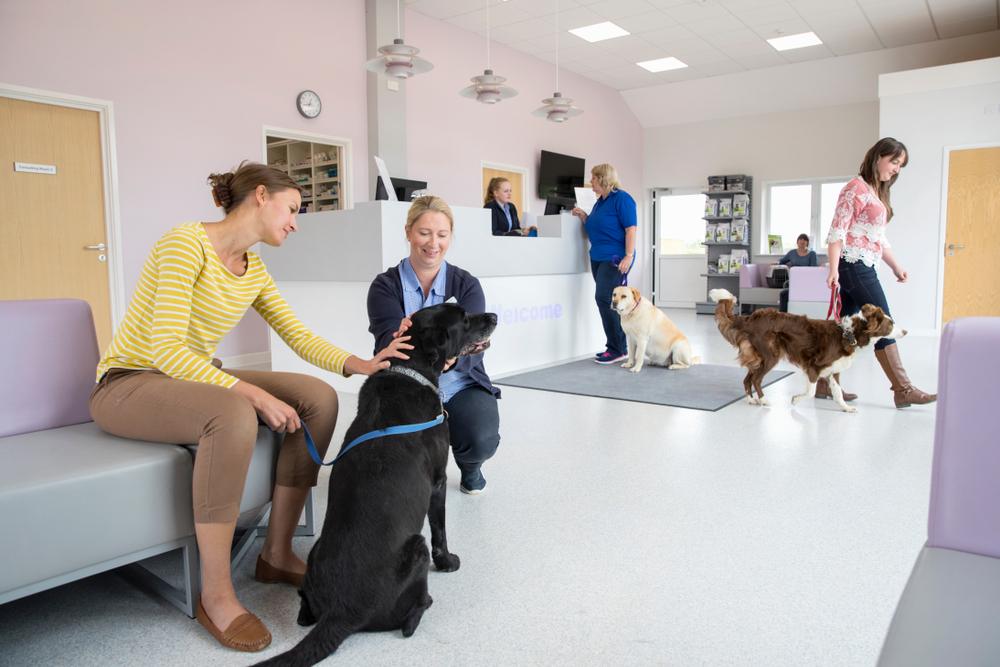Veterinary posters are ideal for both students and veterinary clinics, providing an immediate and clear form of reference that’s also decorative.
They’re also useful for pet owners who wish to learn about anatomy, common diseases, medical procedures and other relevant information. After all, many of us feel in the dark when our pet has to undergo treatment and knowing more about a cat’s skeleton or anatomy can make a difference.

Whether displayed in a waiting room or examination room, pet owners will find it easier to learn about what’s happening with their furry friend. Some posters show anatomy or the skeleton, while others illustrate parasite control, nutrition, dental care, and preventive healthcare.
When put up in veterinary clinics and hospitals, posters can be used as a quick reference guide for veterinarians and vet techs during examinations and treatments. They’re one of the best tools for accessing essential information at a glance.
Eye-catching posters are great for keeping customers well-informed and engaged when visiting a veterinary clinic. They’re also great for decorative purposes, especially if someone is passionate about animals or has a specific interest in veterinary medicine.
With our digital posters, you can easily download and print them off online, saving you time and money.
Veterinary schools and training programs often purchase our posters to enhance their teaching materials and provide visual aids for lectures and demonstrations.
Veterinary students or interns can benefit from having one of our skeleton posters in the clinic for educational purposes. It can assist in their learning of animal anatomy, helping them familiarise themselves with skeletal structures.
Often, verbal explanations may not be sufficient to convey certain concepts or information to clients. A skeleton poster provides a visual aid that can enhance understanding and facilitate communication between veterinarians and clients.
Our poster of a cat’s skeleton is ideal for veterinary students or clinics.

In the meantime, here are 10 interesting facts about the cats’ skeletons:
- Cats have an incredibly flexible spine. It has up to 53 vertebrae (while we have 34-35). This allows them to twist and turn their bodies easily, making them impressively agile and able to land on their feet when they fall, known as the "righting reflex." No wonder cats are described as having ‘nine lives’.
- Ever wondered how cats squeeze through small holes in the fence? Unlike people, they also have a clavicle not attached to other bones. Instead, it floats in muscle. This allows them to move their front legs with greater freedom and squeeze through tight spaces.
- Our feline friends are what’s known as ‘digitigrade animals’; in other words, they walk on their toys. Their "heels" are elevated, and they essentially walk on their tiptoes, which contributes to their silent and stealthy movements.
- You’ve probably also noticed they also have retractable claws, which help them hunt and climb.
- One of the most charming things about cars is their eyes. They have relatively large eye sockets compared to the size of their skulls. This adaptation allows for a greater range of binocular vision, which enhances depth perception and helps with hunting.
- They also have specialised teeth for a carnivorous diet. In particular, they possess sharp, pointed teeth (canines) for grasping and tearing flesh, and their molars are designed for shearing meat rather than grinding vegetation.
- Cats have an idiosyncratic hyoid bone structure, which supports the tongue and larynx and plays a crucial role in their ability to purr, meow, and produce other vocalisations.
- Their tail contains anywhere from 19 to 23 vertebrae, making it highly flexible and aiding in balance. The tail also serves as a communication tool, with different positions conveying different emotions.
- The hind limbs of cats are especially powerful. They provide them with explosive jumping ability. This strength is due to the structure of their bones and the strong muscles attached to them, allowing them to pounce on prey or leap to great heights.
- Cats have ossified tendons in their lower legs, which act like springs, storing and releasing energy with each step. This enhances their running and jumping abilities, contributing to their agility and speed.
Along with our veterinary posters of feline skeletons, Nursing Knowhow also has those of the canine variety.
There are many differences between the bones of dogs and cats. Generally, dogs tend to have larger skeletons compared to cats, although this can vary depending on the breed of the dog and the size of the cat. Dogs typically have longer limbs and a larger body frame compared to cats.
Dogs also typically have broader skulls with more pronounced temporal muscles for jaw strength, while cats have relatively flatter skulls with larger eye sockets for improved vision, especially in low light conditions. When purchasing both posters, it’s easy to see the various differences.
Find out more about our latest veterinary posters. Or don’t hesitate to contact our team for more details.